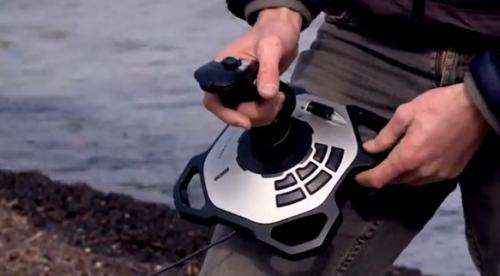An autopilot for steering flying windmills

The idea of using kites to collect the energy produced by high altitude winds has been gaining ground amidst the scientific community. EPFL researchers have developed an autopilot device to control and optimize the movement of these peculiar windmills for obtaining an optimal power production.
Winds are much stronger and consistent above a 1000 meters altitude than on the ground, reaching sometimes speeds over 300 km/h. This constitutes a considerable potential source of energy. But how to harvest the energy? That's how the idea of using kites as an alternative to wind turbines started to gain ground and many researchers and start-ups embarked upon such a research. At EPFL, Sean Costello, PhD student at the Automatic Control Laboratory, has developed an autopilot system to control and optimize the kites' movement so as to obtain the best possible electricity production.
The kite's sail acts as a wind turbine blade. As it offers resistance to the wind, it creates a mechanical tension on the kite's restraining cable. It is then possible to use the cable's winding and unwinding movements to drive an electric generator that can be placed either onboard or on the ground. This is an interesting solution from various standpoints: ecological, energy wise and also economical. While on the ground, traditional devices are subject to winds of varying intensity, with a 40km/h speed on average. These new flying turbines will be able to capture much more powerful and steady winds. Moreover, the absence of a mast will also imply the saving of significant infrastructure costs.
"However, the kite's trajectory must be adjusted continuously and accurately, otherwise it quickly crashes against the ground, explained Sean Costello. This type of energy producing device requires continuous monitoring. Obviously, it is impossible for a human to control it round the clock. This is why we studied the development of an autopilot system."
In the shape of an 8
For months, Sean Costello scrutinized the weather, awaiting a forecast of both sunny and windy days: the conditions required to go and conduct field trials. Equipped with a kite, an engine, some sensors and his computer, he spent hours in Valais and on Lake Neuchâtel's shores, where the strongest winds blow. He recorded all of his kite's movements and tested the cable tension under different conditions of wind strength and direction. By analyzing all the data, he was able to determine the most effective models and translate them into algorithms.
"The stronger the cable tension is, the higher the energy production capacity, said the researcher. The autopilot that we have developed is able to find, in any given situation, the most efficient way to control the wing so that it moves as quickly as possible and generates a maximum tension in the cable. In general, the kite's trajectory will have the shape of an 8. Since some flight paths turn out more successful than others, the autopilot will determine which one is best in each situation."
Provided by Ecole Polytechnique Federale de Lausanne




















